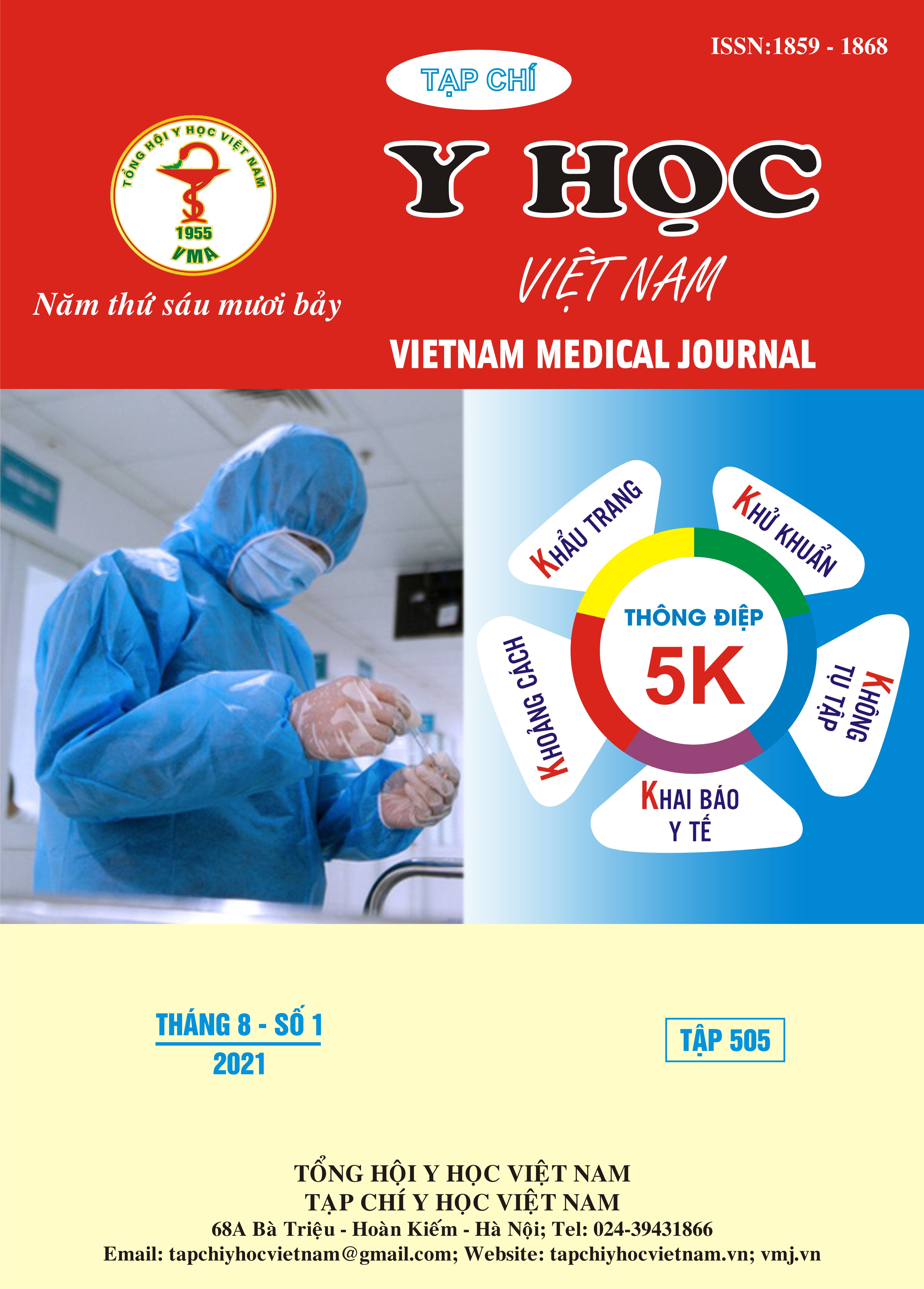ĐÁNH GIÁ SỰ ĐÁP ỨNG CỦA TEST KÍCH THÍCH THẦN KINH LẶP LẠI LIÊN TIẾP Ở BỆNH NHÂN NHƯỢC CƠ THỂ MẮT
Nội dung chính của bài viết
Tóm tắt
Mục tiêu: Nhận xét sự đáp ứng của test kích thích thần kinh lặp lại liên tiếp ở bệnh nhân nhược cơ thể mắt. Đối tượng và phương pháp: 43 bệnh nhân (BN) nhược cơ thể mắt có kháng thể kháng thụ thể acetylcholin dương tính hoặc dương tính với test neostigmin. Kết quả: Tuổi khởi phát trung bình bệnh nhân 39,2 ±17,7 (thể mắt đơn thuần), 43,1± 13 (thể lan toàn thân), thời gian từ khi xuất hiện nhược cơ ở mắt lan toàn thân là 18,9 ± 59,7 tháng. Test kích thích thần kinh liên tiếp (KTTKLT) dương tính ở 28 BN (65,1%), tỷ lệ dương tính ở nhược cơ thể mắt 30,2%, độ nhạy 30,8%, nhóm toàn thân độ nhạy 80%. Độ nhạy KTTKLT của từng cơ cũng khác nhau tùy nhóm cơ: cơ thang (61,5%), cơ vòng mi (53,8%), cơ dạng ngắn ngón cái (30,8%), cơ dạng ngón út (38,5%), đến giai đoạn tiến triển sang toàn thân có độ nhạy cao hơn lần lượt 90%, 86,7%, 80%, 66,7%. Kích thích thần kinh liên tiếp có mối liên quan với mức độ nặng trên lâm sàng theo phân độ Osserman (P= 0,001). Kết luận: Test kích thích thần kinh liên tiếp là xét nghiệm đơn giản, thuận lợi có thể giúp chẩn đoán bệnh nhược cơ thể mắt được nhanh hơn và có thể phát hiện những cơ yếu dưới lâm sàng.
Chi tiết bài viết
Từ khóa
Nhược cơ, nhược cơ thể mắt, test kích thích thần kinh lặp lại
Tài liệu tham khảo
2. Osserman KE. (1967). Ocular Myasthenia Gravis. Invest Ophthalmol Vis Sci, 6(3), 277-287.
3. Gilhus N E, & Verschuuren J J. (2015). Myasthenia gravis: subgroup classification and therapeutic strategies. Lancet Neurol, 14(10), 1023-1036. doi:10.1016/S1474-4422(15)00145-3
4. Vincent A, & Newsom Davis J. (1980). Anti-acetylcholine receptor antibodies. J Neurol Neurosurg Psychiatry, 43(7), 590-600. doi:10.1136/jnnp.43.7.590
5. Thanvi B R, & Lo T C. (2004). Update on myasthenia gravis. Postgrad Med J, 80(950), 690-700. doi:10.1136/pgmj.2004.018903
6. Nguyễn Hữu Công. (2013). Chẩn đoán điện và ứng dụng lâm sàng: Nhà xuất bản Đại học quốc gia thành phố Hồ Chí Minh.
7. Kim K H, Kim S W, & Shin H Y. (2021). Initial Repetitive Nerve Stimulation Test Predicts Conversion of Ocular Myasthenia Gravis to Generalized Myasthenia Gravis. J Clin Neurol, 17(2), 265-272. doi:10.3988/jcn.2021.17.2.265
8. Oh S J, Jeong D, Lee I, et al. (2019). Repetitive nerve stimulation test in myasthenic crisis. Muscle Nerve, 59(5), 544-548. doi:10.1002/mus.26390
9. Witoonpanich R, Barakul S, & Dejthevaporn C. (2006). Relative fatigability of muscles in response to repetitive nerve stimulation in myasthenia gravis. J Med Assoc Thai, 89(12), 2047-2049.
10. Jing F, Cui F, Chen Z, et al. (2015). Clinical and Electrophysiological Markers in Myasthenia Gravis Patients. Eur Neurol, 74(1-2), 22-27. doi:10.1159/000431284


